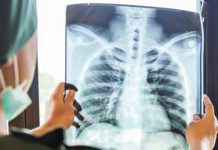The University of Maryland, Baltimore’s (UMB) Office of Research and Development announced that Encore Path, Inc. of Baltimore signed an exclusive worldwide license agreement for a device technology invented jointly by researchers at the University of Maryland, Baltimore and the University of Maryland Baltimore County (UMBC) that helps stroke patients retrain their bodies to walk.
The new device is called the "Step Trainer for Enhanced Performance using Rhythmic Cues", or STEP-R. It was co-invented by the Jill Whitall, PhD, professor and Sandra McCombe-Waller, MS, PhD, PT, NCS, assistant professor in the Department of Physical Therapy and Rehabilitation Science (PTRS) at the University of Maryland School of Medicine, and Muniswamappa Anjanappa, PhD, professor in the Department of Mechanical Engineering at UMBC.
The device is designed to help strokepatients redevelop their natural gait. Following a stroke, patients will often increase the frequency of their steps without increasing the length of their stride. STEP-R will use auditory cues to retrain the neuromuscular pathway much like EncorePath’s first stroke device, Tailwind, does to improve arm function and range of motion. The device will allow a physical therapist to more accurately diagnose and customize a therapy regimen. Versions for in-home use may be developed in the future.
In discussing her decision to license the new technology, Kris Appel, founder and president of Encore Path, said "Tailwind has been very well received and the technology is sound. STEP-R works on the same scientific principles. We are having such a good reaction from stroke survivors for the Tailwind that it makes great sense to license STEP-R."
Development of a prototype of the new device at the School of Medicine is being funded in part by a grant from the Maryland Industrial Partnerships (MIPS) program. Under the terms of the license agreement, UMB is entitled to a license fee, milestone payments and royalties on sales.
"We are thrilled that the UMB technology that is the basis for Tailwind is creating positive outcomes for stroke survivors. We hope that STEP-R will be equally successful," says Jim Hughes, Vice President for Research and Development at UMB. "The ultimate goal of our technology transfer efforts is to translate the tremendous research enterprise at UMB into commercially available therapeutics, diagnostics and devices that will improve human health."
























